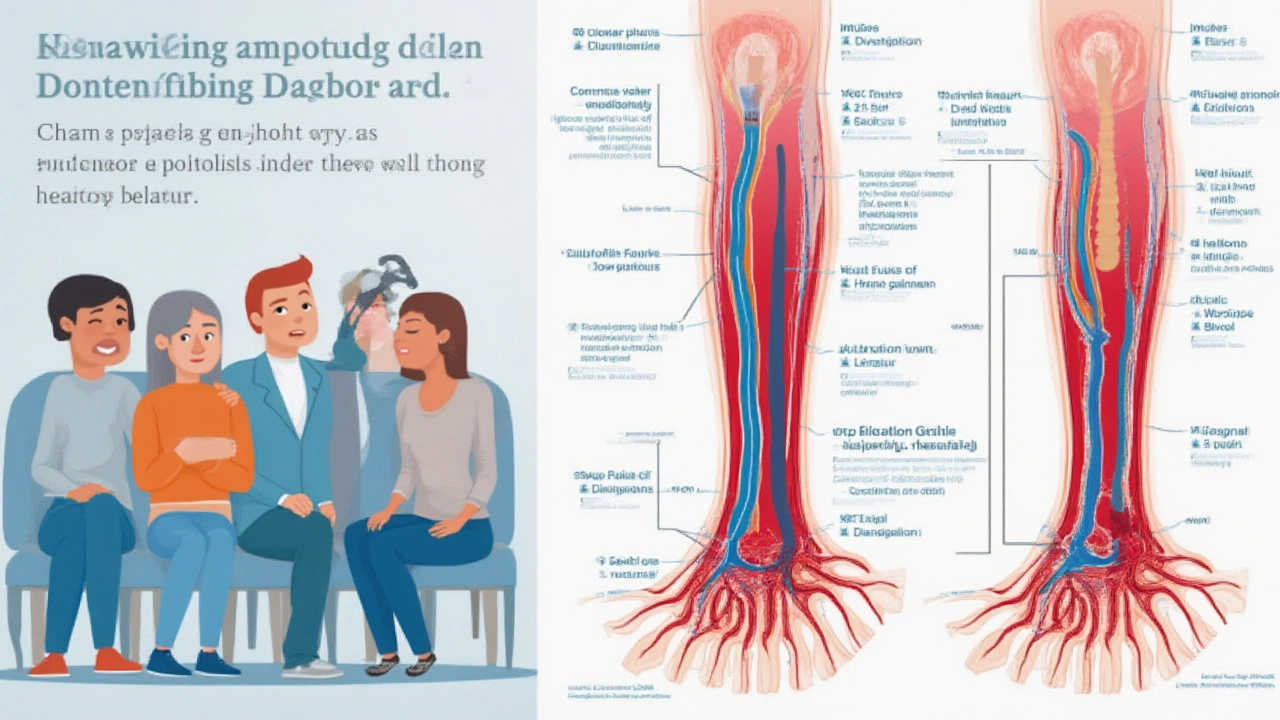Vein Health: Simple Steps to Keep Your Blood Flowing Right
Veins are the highways that bring blood back to your heart. When they work well, you feel energetic and your legs don’t feel heavy. When they start to struggle, you might notice swelling, pain, or those annoying spider veins. The good news? Most vein problems can be eased with everyday habits you already know.
Spot the Signs Early
First, learn the warning signals. Dark, bulging veins that pop up on your calves or thighs are often varicose veins. A feeling of tightness, cramping, or a sore, warm spot could mean a clot is forming – that’s deep vein thrombosis (DVT). If you get a sudden, sharp pain in your leg after a long flight, stop and move around; it might be a sign of blood pooling.
Keeping an eye on these signs helps you act before things get worse. A quick self‑check in the mirror and a short stretch can catch problems early.
Move Your Muscles, Boost Your Veins
One of the easiest ways to protect vein health is to stay active. Walking for 20 minutes a day gets the calf muscles pumping, squeezing the veins and pushing blood upward. If you sit at a desk, set a timer to stand up and march in place every hour. Even simple ankle circles while watching TV keep the blood flowing.
Strength training isn’t just for muscles – it also supports veins. Squats, lunges, and calf raises strengthen the surrounding tissue, making it harder for veins to balloon.
What about diet? Foods rich in flavonoids, like berries, oranges, and dark leafy greens, strengthen vein walls. Drinking enough water keeps blood thin enough to move easily. Limit salty snacks; excess sodium makes your body retain water, adding pressure to your leg veins.
If you’re looking for a supplement boost, consider horse chestnut extract or grape seed extract. Both have research showing they can reduce swelling and improve circulation when taken as directed. Always check with a pharmacist or doctor before adding anything new.
Compression socks are another practical tool. They apply gentle pressure, helping the veins push blood back toward the heart. Pick a pair that fits snugly but isn’t painfully tight, and wear them during long trips or if you’re on your feet all day.
Weight management plays a big role, too. Extra pounds increase pressure on your leg veins, making varicose veins more likely. Even a modest loss of 5‑10 % of body weight can ease that pressure and reduce symptoms.
Finally, know when to call a professional. If you notice sudden swelling, a painful lump, or skin changes like redness or ulceration, book an appointment. A quick ultrasound can rule out DVT, and a vein specialist can suggest treatments ranging from minimally invasive laser therapy to lifestyle tweaks.
Keeping your veins healthy isn’t a one‑time project; it’s a series of small, consistent habits. Walk more, eat colorful foods, stay hydrated, and give compression socks a try when you need extra help. Your legs will thank you with less pain, better circulation, and a more active life.
-
Chronic Venous Insufficiency & Embolism: What Really Connects Them?
Explore how embolism and chronic venous insufficiency connect, risk factors, stats, symptoms, and actionable steps to keep your veins healthy for life.
